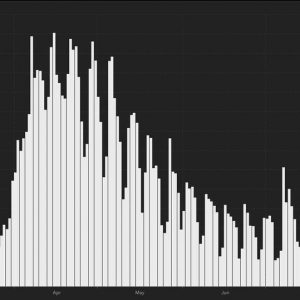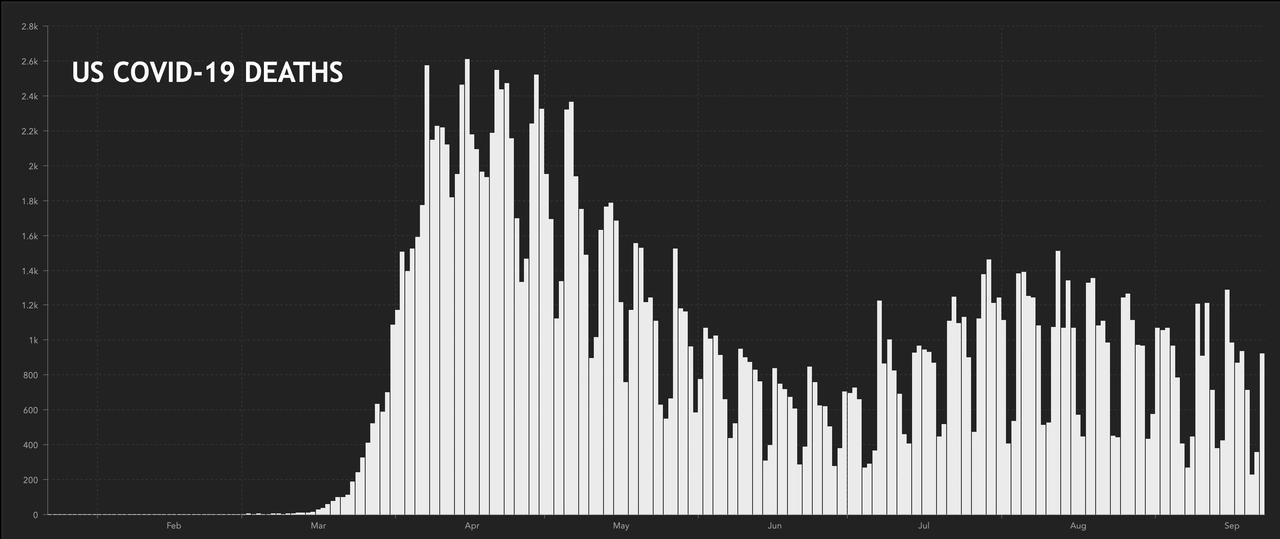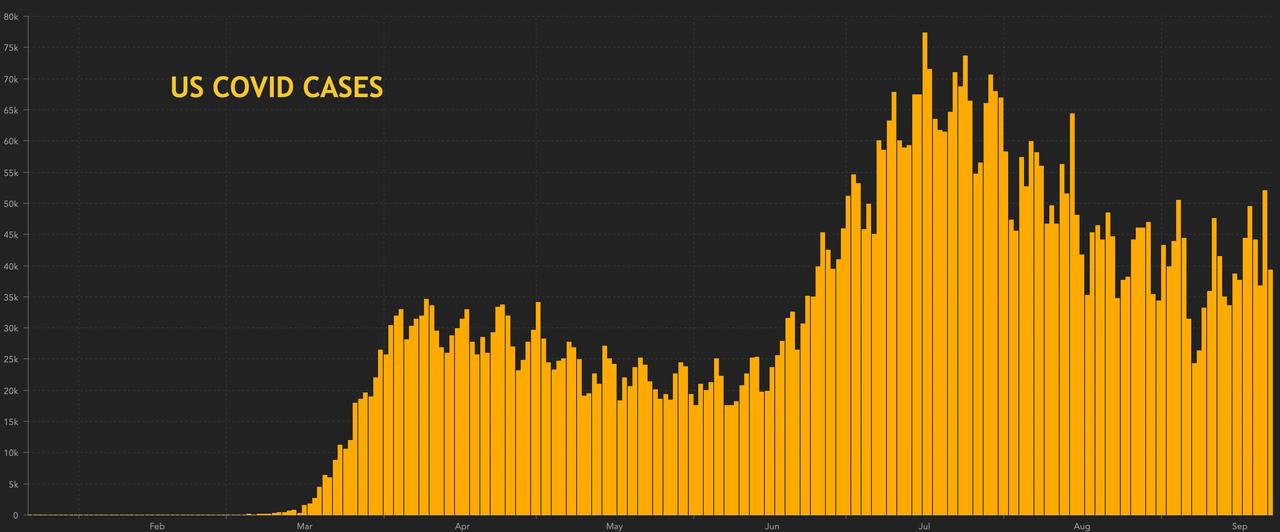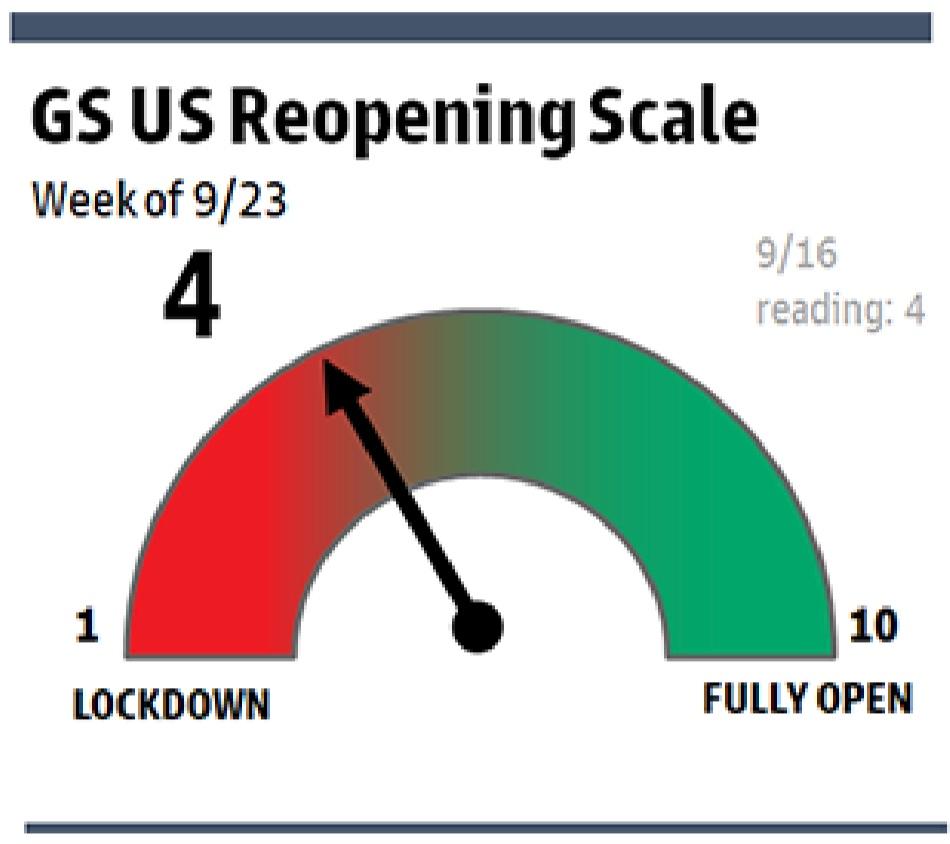Feature your business, services, products, events & news. Submit Website.
Breaking Top Featured Content:
Germany Adds 11 Regions To “Coronavirus Watch List”, France Closes Bars, Restaurants In Marseilles: Live Updates

Tyler Durden
Wed, 09/23/2020 – 19:28
Summary:
- Germany adds 11 regions to travel warning list
- France orders bars and restaurants shut in Marseilles, Paris on “high alert”
- Head of FDA advisory committee recuses herself from COVID vaccine review
- Irish outbreak worsens
- Eiffel Tower reopens, Met Opera scraps season
- CDC director hints at new guidance on aerosols
- US nears 7 million cases
- Post-LBW spike continues
- Trump moves more money to ‘Operation Warp Speed’
- NYC warns of new hotspots that require “urgent action”
- Mayor de BLasio furloughs 9k workers
- France to announce new COVID restrictions
- Japan on track to approve new COVID drug
- Indonesia reports another daily record
- China, Japan to ease travel restrictions on foreigners
* * *
Update (1920ET): Germany on Wednsday evening announced it would add 11 regions across Europe to its list of “coronavirus risk zones”, according to a statement from Germany’s Robert Koch Institute, the agency in charge of Germany’s COVID-19 response.
The list includes several popular tourist destinations across Europe, according to Reuters.
Germany added regions in 11 European countries to the list of destinations it classifies as coronavirus risk zones, dealing a further blow to hopes for a revival of tourism as many countries brace for a possible second wave of the pandemic.
Regions newly listed by the Robert Koch Institute health agency included major tourist destinations such as the French regions of Centre-Val de Loire, Brittany and Normandy, as well as the coastal region Lika-Senj in Croatia and the upland Primorsko-notranjska region in Slovenia.
The Irish, Portuguese and Danish capitals, the Dutch province of Utrecht, Austria’s state of Vorarlberg, most of the Czech Republic, Gyor county in Western Hungary and Romania’s Covasna county were also listed.
Listing as a risk area is typically followed by the Foreign Ministry advising against non-essential travel to the region in question.
Germany warns against travel to regions within the European Union where the rate of COVID-19 infections exceeds the level of 50 per 100,000 population in a week.
Adding regions to the list typically comes before an official travel advisory is issued.
In other European news, French President Emmanuel Macron announced Wednesday in a much overhyped announcement that the French government would shut down bars and restaurants in Marseilles, the hardest hit city in the country. Meanwhile, the Paris region, which is also seeing a spike, even as tourist spots like the Eiffel Tower prepare to reopen, is on high alert.
* * *
Update (1750ET): Both the Trump Administration and the career scientists are working diligently to protect the ‘credbility’ of the FDA long enough to convince people to take a COVID-19 vaccine after an expedited review process. But conflicts like this don’t help.
Exclusive: A physician who heads the FDA vaccine advisory committee recused herself from the panel’s review of COVID-19 vaccines because of her role overseeing a clinical trial for Moderna’s candidate, her spokeswoman says https://t.co/8rMaiSfRms pic.twitter.com/beJCmhk5U2
— Reuters (@Reuters) September 23, 2020
And with that, the head of the FDA’s vaccine advisory committee won’t have a say in approving any of the most important vaccine to be developed in decades.
* * *
Update (1340ET): Barely a day goes by, it seems, without Dr. Fauci, Dr. Redfield and other top officials from DHHS/the former White House coronavirus task force, testifying before Congress. Wednesday was no different, with both men testifying before the Senate. Redfield started off by blaming young people between the ages of 18 and 25 for the resurgence in cases over the summer, calling them “major contributors” to the spread of COVID-19.
Later, Redfield was asked by one senator to offer some clarity on the CDC’s abrupt decision to retract recently changed guidance regarding aerosol transmission. He said the document that was posted was a “non-scientifically cleared” document.
However, he’s readying another document that will be scientifically cleared, though Redfield didn’t offer any more insight on that.
With vaccines again the big story of the day after the JNJ news, Dr. Fauci once again told lawmakers that a vaccine will likely be approved by the end of the year.
Circling back the CDC guidance, scientists are battling over whether aerosol transmission – ie spread via tiny particles than can travel over 30 feet from a sneeze or a cough – is the primary cause of COVID-19’s spread. A growing group of scientists are pointing to super spreader events linked to choirs and concerts etc to argue the virus does primarily spread in this way, while surface contact and spread from close interaction are also important vectors, according to the Washington Post.
Some scientists argued that the resistance toward officially classifying the virus as “airborne” is due to “historical bias”.
Some other news from Wednesday: the Eiffel Tower will soon reopen to tourists for the first time since the start of the pandemic.
Finally, an outbreak in Ireland has continued to worsen: The number of new coronavirus cases in the country will double every 12 to 14 days at the current rate, the nation’s health ministry warned on Wednesday, after the country reported 234 more cases on Wednesday, along with two new deaths.
“We are unfortunately seeing continuing increases in all metrics of the disease,” Health Ministry advisor Philip Nolan told reporters in Dublin, adding it was too early to see the impact of new restrictions imposed on the country last week.
Finally, here’s some more information on the NYC clusters noted earlier: Since the first week of August, the city has seen a 4.71% increase in Midwood, Borough Park and Bensonhurst, 3.69% in Edgemere-Far Rockaway, 2.24% in Kew Gardens and 2% in Williamsburg.
* * *
The number of new COVID-19 cases reported in the US on Tuesday accelerated to 39,345 (compared with +37,417 the prior day), as the post-Labor Day Weekend surge (something that BofA analysts insist is being driven almost entirely by increases in testing) continues. Mirroring the increase in cases, deaths increased by 438, compared with just 270 the day before. California saw cases climb 2,630 yesterday (compared with +3,294 for the prior day), while deaths increased by 53, vs. 31 a day ago.
Meanwhile, the US death toll topped 200,000, a level that was once “unfathomable”, according to the AP.
“It’s completely unfathomable that we reached this point,” said Jennifer Nuzzo, a JHU researcher. The AP also noted that 200,000 deaths from the virus is roughly equivalent to one “9/11” per day for 67 days.
The newswire also noted that the milestone comes “six weeks before an election that is certain to be a referendum in part on President Donald Trump’s handling of the crisis.”
Speaking on CNN, Dr. Fauci said “the idea of 200,000 deaths is really very sobering, in some respects stunning.” President Trump, meanwhile, said last night that “if we didn’t do it properly and do it right, you’d have 2.5 million deaths”, while Democratic candidate Joe Biden took to twitter to proclaim “it didn’t have to be this bad” (then again, Biden also apparently believes the death toll is 200 million, several orders of magnitude higher than reality). Brazil, which essentially did let its outbreak run wild, is in second place with 137,000 deaths, though some critics believe that number underestimates the true death toll.
Looking ahead, the US is roughly 2 days away from becoming the first country to top 7 million confirmed cases: As of Wednesday morning, the US had 6,897,756 cases, and 200,818 confirmed deaths.
In terms of the big US news on Wednesday, NYC’s health department identified a new cluster of cases yesterday in Brooklyn which it warned could be cause for “significant concern”. the hot spots have been traced to four areas in Queens and Brooklyn.
Speaking Wednesday morning, Mayor de Blasio warned these new ‘hot spots’ require “urgent action” and that NYC will increase enforcement of social distancing rules and also bolster its testing efforts to try and stave off the new outbreak. The mayor also annonced a five-day furlough impacting 9,000 employees – a measure that will reportedly save the city $21 million.
And as we noted earlier, JNJ announced its vaccine candidate would be starting Phase 3 trials, making it the fourth candidate to cross that threshold. Yesterday, UK PM Boris Johnson unveiled new measures to slow a resurgence in the UK’s outbreak. The PM also warned that if the measures aren’t effective, that the UK may return to lockdown, even as a team of BofA analysts warned that tighter COVID restrictions will “scar the UK economy further”.
Wisconsin Gov Tony Evers announced new measures late Tuesday declared a public health emergency and extended an order to wear face masks into November.
Finally, the Trump Administration according to Bloomberg is shifting billions of dollars to ‘Operation Warp Speed’, its vaccine effort which relies on throwing money at vaccine projects, and away from testing and masks. The shift shows the administration’s “increasing focus on a medical solution to ease the pandemic,” Bloomberg said. The new money will swell the program to $18 billion from $10 billion.
“Escalating lockdown measures, fading stimulus measures and Brexit uncertainty will push the economy into contraction over the next two quarters,” said BofA’s Robert Wood, chief UK economist.
Here’s a roundup of other important COVID news from Wednesday:
Global cases have hit 31,615,836, while deaths have reached 971,116 (Source: JHU).
Indonesia sets new daily record: The country reported 4,465 new cases, and another 140 deaths. This is only the fourth time Indonesia has topped 4k daily cases, and each instance has come during the last week (Source: Nikkei).
Tokyo reports 59 cases, marking the lowest daily figure in nearly three months. The number was down from 88 on Tuesday and 98 on Monday, and the lowest since June 30, when 54 cases were reported (Source: Nikkei).
Fujifilm announced that its Avigan drug reduced viral loads and symptoms of COVID-19 patients, clearing the last hurdle to emergency approval in Japan, following months of delays. The Phase 3 clinical study of 156 patients showed that those treated with Avigan improved after 11.9 days, versus 14.7 days for a placebo group (Source: Nikkei).
Japan is finally planning to ease access for foreigners in October, though its restrictions will remain pretty stringent: Only 1,000 visitors will be allowed into Japan per day, and initially only those staying for more than 3 months will be allowed in (and they must quarantine for 2 weeks upon arrival) (Source: Nikkei).
India reported 83,347 cases Wednesday, up from 75,083 on Tuesday, bringing its total to nearly 5.65 million. The death toll has jumped by 1,085 to 90,020. The country’s testing capacity now exceeds 1.2 million per day, by far the highest in the world, and more than 66 million tests have been conducted in total (Source: Nikkei).
China reported 10 cases for Sept. 22, up from just six a day earlier. China is also planning to ease entry rules for foreigners starting Sept. 28 (Source: Nikkei).
Australia sees just 15 new cases in its COVID-19 “hot spot” of Victoria, the country’s second-largest state, and home to its second city, Melbourne. Reporting just 15 cases and five deaths, compared with 28 cases and 3 deaths yesterday (Source: Nikkei).
Goldman Sachs, HSBC and others have paused plans to return workers in London after PM Johnson appealed to Britons to work from home (Source: Bloomberg).
Argentina reported a record 470 COVID-19 daily deaths, pushing its total to 13,952, according to the government’s evening report. It’s the second day in a row Argentina has reported a record rise in fatalities. Officials also confirmed 12,027 new cases, bringing the total to 652,174 (Source: Bloomberg).
Finally, Goldman Sachs analysts have come up with the following chart to measure the level of COVID-19 restrictions in place in the US. Right now, it’s swinging back toward more restrictions as states move to curb an expected “fall surge” as college students return home.
Continue reading at ZeroHedge.com, Click Here.



